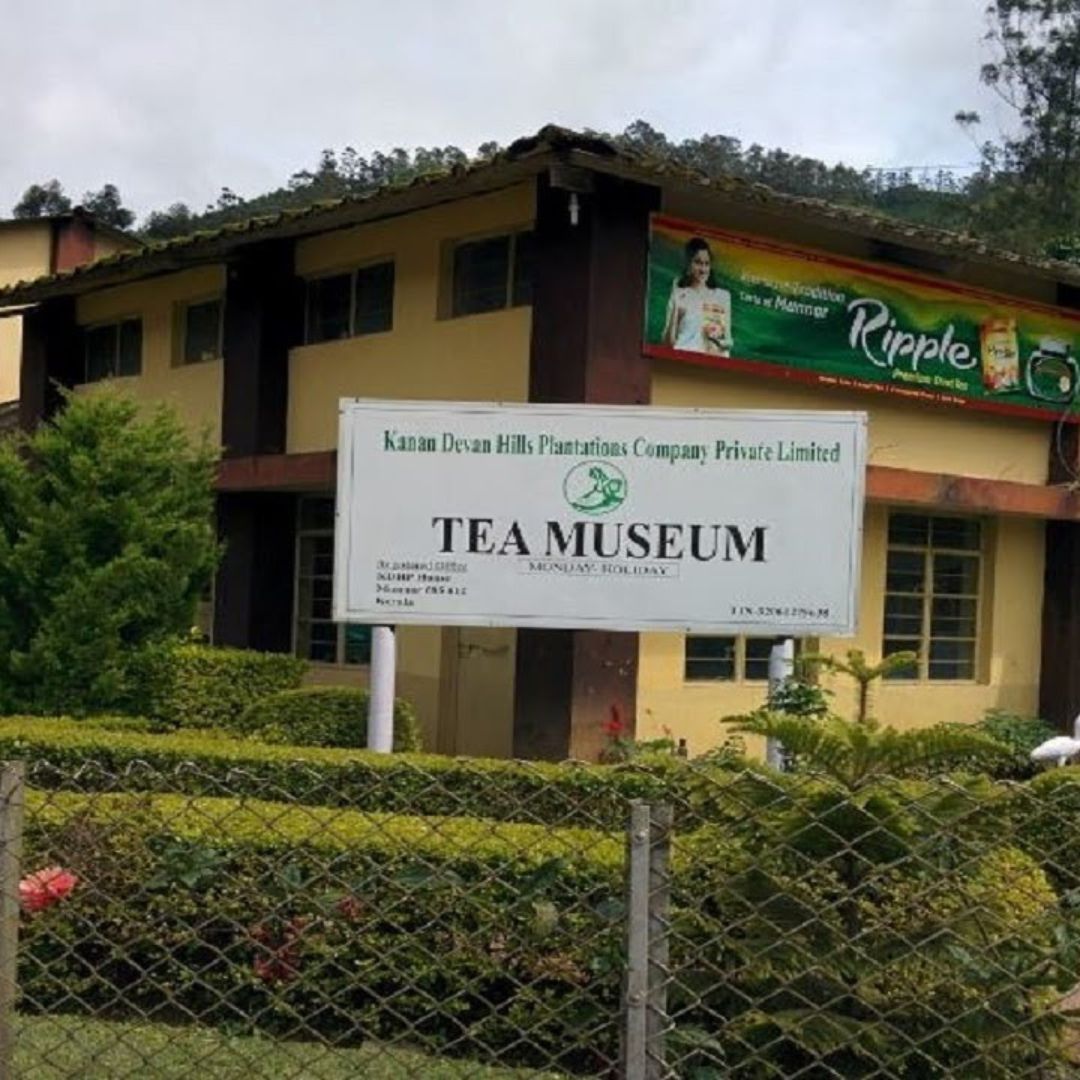Munnar is a scenic hill station of Kerala, particularly in the Western Ghats, known for its visual landscapes, rolling green plantations of tea, and pleasant climate. Among the top attractions that brought thousands of tourists to this destination is the KDHP or Kannan Devan Hills Plantation, commonly called Tata Tea Museum. Located right in the heart of Munnar, this museum will take you on a journey through all that they have to offer in terms of rich history and culture about their tea industry, which is deeply intertwined with the region’s heritage.
- KDHP Tea Museum History
The KDHP Tea Museum, popularly known as the Tata Tea Museum Munnar, was established by Tata Tea, one of India’s largest tea producers. Established in the year 2005, this museum was one of the state’s initiatives for conserving and developing the tea industry in Munnar. Organized by Kannan Devan Hills Plantation Company Pvt. Ltd. (KDHP), established in 2005, following the Tata Tea decision to hand over the tea estates to the plantation workers, the museum envisions a total history of Munnar’s legacy of tea production since the 19th century.
- Locality and Accessibility
KDHP Tea Museum is located at Nallathanni Estate in Munnar and is a little over 2 kilometres from the town centre. It is accessible by road and one of the most popular tourist stops when visiting the tea estates and plantations of Munnar. The short drive through rolling tea estates gives everybody a glimpse into the peaceful landscapes around Munnar.
- History and Development of Tea Industry in Munnar
Tea dates back to the end of the 1800s with the establishment of tea estates by British planters in Munnar. They started planting several crops, but tea finally emerged as the most promising crop in the favorable climatic conditions of Munnar. Tata Tea became a significant participant in the development as they acquired the estates and played a crucial role in elevating Munnar as a major tea-growing center.
In 2000, Tata Tea became history in transferring the ownership and management of its tea plantations to the very people who had tilled them for decades, in the form of KDHP-the first employee-owned plantation company in India. This way, workers gained a direct stake in the business while preserving traditional methods of producing tea.
- Visit the Tata Tea Museum
The KDHP Tea Museum is designed to take the visitor along a chronological journey of how tea production evolved in Munnar. It showcases displays that convey each phase-from the process of clearing forests for plantation development right through to the laborious process of tea production.
- Process of Tea Production
One of the major attractions here is the processing section of the museum, where one can view all aspects of tea production-from picking the leaves to the delivery of prepared tea in packets. The process is carried out in steps: picking, withering, rolling, fermentation, drying, and sorting. Every step steers the quality, flavor, and aroma of the final product.
The individual would be enlightened by a live demonstration of various techniques utilized in producing different types of teas, including black, green, and white tea. The guides and staff will reduce the technical jargon attached to the entire process of making tea so that there is a deeper understanding of flavours and textures.
An excellent place to view the impressive collection of vintage equipment and machines used in tea-making that, some going back over a century, this is. Such artifacts give an insight into traditional practices; for example, one finds the early 20th-century roller and even the rotorvane, which are still used in certain regions of the world for orthodox processing.
One such exhibit is the prototype “Pelton Wheel” turbine meant for power generation when the plantations were still in their infancy. Another such antique worth mentioning is the tea roller and hand grinders, which see some of the innovation and the labor that somehow managed to find its way into the tea industry in Munnar.
- Tea Tasting Experience
During this trip, one of the most exciting parts of visiting a museum is the tea tasting session. There, visitors will be able to try so many teas, including some of the premium blends that are locally produced. The guided sessions by experts enable the visitors to distinguish the subtle flavors and aromas of the different teas. From the malty richness of Assam tea to the delicate notes of green tea, there is much to discover in these flavors.
But what is impressive is that these teas are available in the souvenirs of the museum, along with many other products that include tea-infused chocolates, tea oils, and tea-based skincare items. Thus, it is a perfect place to take a piece of Munnar back home .
. Documentary and visuals
KDHP Tea Museum telecasts a short documentary film that unveils the background of the tea estates of Munnar. The story is really interesting, in how Munnar’s tea industry underwent transformation in many ways from its British colonial background to today’s megasized production of one of India’s most iconic tea estates.
- Tata Tea Estate Munnar and tata tea factory munnar: A World of Tea
Tea estates in Munnar stretch from one hill to another in various acres of lush green hills. Such landscapes make great photographing spots and provide a panoramic view. Visitors can also walk through the tea plantations to personally get a glimpse of rows and rows of tea bushes covering the slopes. The neat pruned shrubs by tea pluckers who pick the finest leaves provide a glimpse of the dedication and skill involved in tea cultivation.
Another is the Tata Tea Factory, not too far from the museum. There one can witness the inner dynamics of a real tea factory and its production that involves thousands of kilos of tea leaves processed every day. A visit around the factory would enable people to practically feel how the modem technology put into the production of tea takes contrast with the machinery at work as it deploys in the museum.
- Conservation and Sustainable Practices
The company has taken sustainability as a core area. The tea industry is heavily dependent on natural resources, and KDHP has taken a number of initiatives where its estates follow the most environment-friendly practices. Methods of biofertilizers, soil conservation practices, and water usage efficiency are part of it. The employee ownership model has also only strengthened a community-based approach wherein employees have been encouraged to become good custodians of the soil.
- Impact of the Tea Industry in Munnar on Culture and Economy
The economy and culture of Munnar have been significantly impacted by the tea industry. Overwhelmingly, nearly the entire population of Munnar works in tea plantations in some way, either as laborers or through the provision of services associated with tourism. KDHP Tea Museum has become one of the most visited attractions at the site; tens of thousands visit the site and engage members of the local communities to make tourism an effective source of employment for the region. The theme of heritage of tea has, in fact, helped promote tea tourism and made it an international destination for a region.
Today, Tata Tea, part of Tata Global Beverages, commands international acclaim, and the association of the company with Munnar has spurred this region to be recognized as a premium tea producer. This relationship has matured in the sense of Munnar becoming a separate cultural and economic entity in Kerala where tea is not just for living but an identity.
- Practical Information for Visitors
Location: KDHP Tea Museum, Nallathanni Estate, Munnar, Kerala.
Timings : The museum is generally open between 9 a.m to 5 p.m. It closes from 12:00 p.m to 1:00 p.m. for lunch. Please check for the changes in timings, as it varies during seasons.
Entry Fee: Every visitor has to pay an entry fee, but the reductions are provided in terms of children and students. This fee may differ for Indian and International tourists, so it’s best to check ahead.
Best Time to Visit: The best time to visit the tea museum and plantations is from September to March where the weather will please the eyes.
Conclusion
The KDHP Tea Museum, otherwise known as Tata Tea Museum is Munnar, is surely much more than a tourist attraction, a peek into the past, culture, and economic backbone of this beautiful hill station. Whether you are a tea lover or a historian, the tata tea munnar, museum and tea estates surrounding it offers an educative and firsthand experience in the world of tea. From the glorious history of the Tata Tea company to scenic beauty around the tea estates, this destination leaves an indelible impression on anybody who visits, thus forming an essential tick on the Munnar itinerary.




